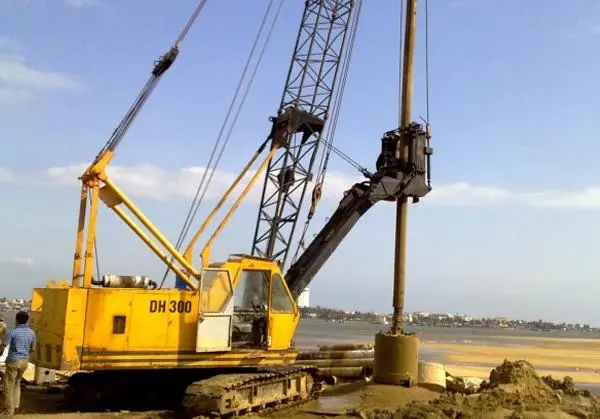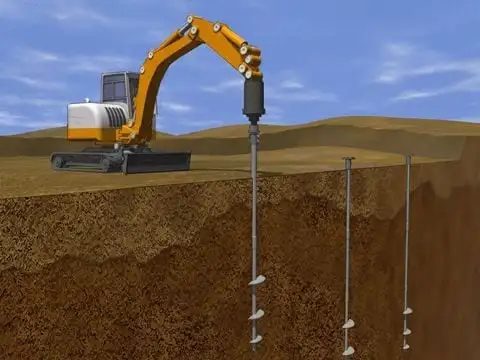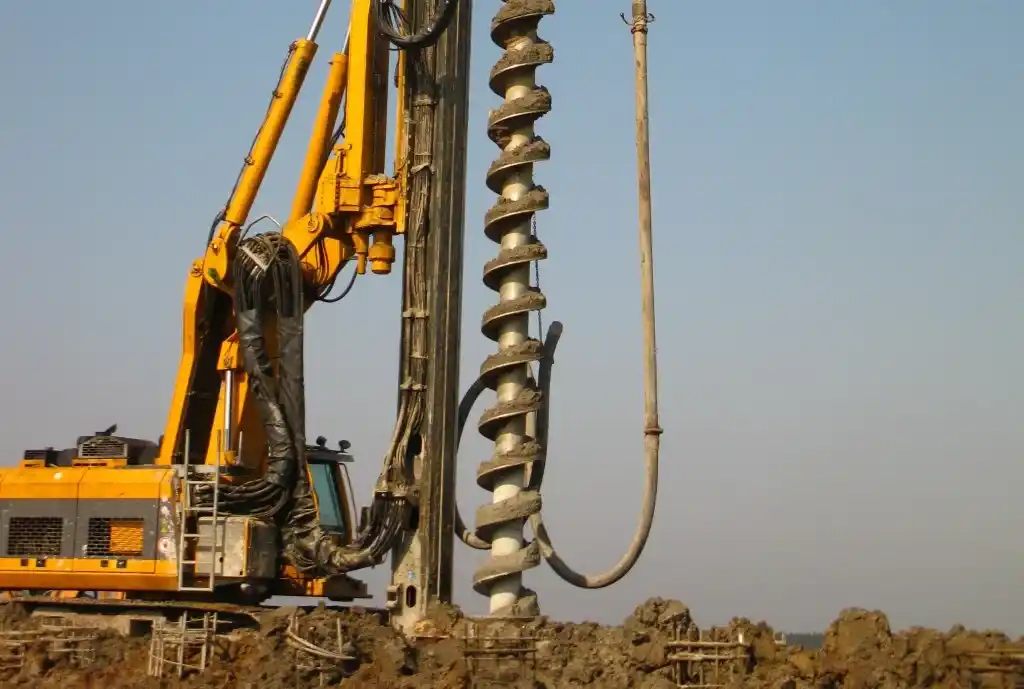Digging Piles: A Crucial Foundation Technique in Modern Construction
Digging piles, or pile driving, is one of the most critical methods used in construction, particularly for large-scale projects such as skyscrapers, bridges, and other infrastructures. In the construction world, this process plays a vital role in reinforcing building structures on unstable soil, allowing them to stand strong for many years.
Here is a comprehensive and detailed discussion of the digging piles process, its applications, and how this method has become a key element in modern construction.
What Are Digging Piles?
Digging piles involve installing piles into the ground, which act as foundations to bear the weight of structures. These piles help distribute the building’s weight evenly, ensuring stability even on soft or unstable ground.
The process typically involves drilling the ground to a certain depth and then placing piles made of concrete, steel, or wood to support the load. The depth of these piles varies depending on the soil type and the building load they are required to support.

Advantages of Using Digging Piles
Stability on Unstable Ground
Digging piles are highly effective in areas with unstable soil, such as sandy, marshy, or soft ground. The piles provide the extra stability that shallow foundations cannot achieve.More Even Load Distribution
Piles help distribute the weight of the building to deeper layers of the earth, which are generally denser and more stable, preventing foundation settlement or cracking.Flexibility in Material Use
Piles can be made from various materials, including concrete, steel, and wood, depending on the project requirements and budget.
The Process and Methods of Installing Digging Piles
The digging piles process typically involves several important steps that must be carefully followed to ensure the piles are installed correctly and safely. Below are the main methods used for pile installation:
1. Hammering Method (Driving with a Pile Driver)
This is one of the most traditional and widely used methods for installing piles. The piles are driven into the ground by being hammered with a large mallet or specialized machinery until they reach the desired depth.
Advantages:
- This method is quick and suitable for projects with tight deadlines.
- Effective for steel or concrete piles.
Disadvantages:
- It can cause strong vibrations, making it less suitable for densely populated areas or projects near other structures.
2. Drilling Method
The drilling method involves drilling a hole into the ground before inserting the piles. Once the hole is drilled to the required depth, the piles are placed inside, and concrete is often poured to secure the pile.
Advantages:
- Less vibration compared to the hammering method.
- Suitable for urban areas or environments sensitive to vibrations.
Disadvantages:
- This process can be slower compared to the hammering method.
3. Vibro-Hammering Method
In this method, piles are installed by using vibrations to press the pile into the ground. Vibro-hammering is gentler than traditional hammering and reduces the risk of pile damage.
Advantages:
- More environmentally friendly due to reduced noise and vibrations.
- Suitable for lighter or shorter piles.
Disadvantages:
- Less effective for long and heavy piles.

Types of Piles Used in Digging Piles
Different types of piles are used depending on the soil type and construction project. Below are some common types of piles used in the digging piles process:
1. Precast Concrete Piles
These piles are manufactured in factories and then transported to the construction site for installation. Precast concrete is strong and durable, making it ideal for large building projects.
Advantages:
- Strong and durable.
- Ideal for high-rise building projects.
Disadvantages:
- Transportation can be challenging due to the heavy weight.
2. Steel Piles
Steel piles are made from high-strength steel and are commonly used in construction projects where the soil is very hard. Steel has excellent flexibility and tensile strength, making it suitable for large-scale projects.
Advantages:
- Can withstand high pressure.
- Suitable for hard soil.
Disadvantages:
- Requires protection from corrosion, especially in moist areas.
3. Wooden Piles
Wooden piles are less commonly used in large projects but are still effective for smaller or temporary projects. Wood piles are used in soil with high water content as wood lasts longer in wet conditions.
Advantages:
- Affordable and easy to install.
- Suitable for small or temporary projects.
Disadvantages:
- Less durable compared to concrete or steel.
Common Challenges in Digging Piles Installation
Like any construction project, digging piles installations face several challenges that must be addressed to ensure project success. Common challenges include:
Unstable Soil Conditions
In some locations, soft or sandy soil can make pile installation difficult, requiring special methods or additional reinforcement.Vibrations and Noise
The hammering method often produces strong vibrations and noise, which can disturb the surrounding environment, especially in urban areas or projects near other buildings.Extreme Weather Conditions
Harsh weather, such as heavy rainfall or excessively wet soil, can slow down the installation process and require work adjustments.
Maintenance and Inspection of Piles
After the piles are installed, regular maintenance and inspections are crucial to ensure the foundation remains strong and no settlement or damage occurs. The following steps can help in maintaining pile stability:
Regular Inspections
Conduct routine inspections to detect any cracks or damage in the piles, especially in areas with high seismic activity.Additional Reinforcement
If pile settlement is detected, new piles can be added, or the existing piles can be reinforced to maintain stability.
Why Digging Piles Are Essential in Modern Construction
Digging piles are a critical element in large-scale construction projects, especially for buildings situated on unstable soil. This process provides a strong foundation capable of withstanding heavy loads, ensuring that the building remains stable for years to come. With the right methods and materials, digging piles offer an efficient and reliable foundation solution.
SSC Works: Experts in Heavy Equipment Repair for Digging Piles
If you require maintenance or repair services for heavy equipment used in the digging piles process, SSC Works is here to assist. Our experienced team specializes in repairing heavy machinery such as drilling rigs, cranes, and more, ensuring that your equipment operates at optimal performance. Contact us today for reliable repair services and expert consultation.
Have you ever used the digging piles method in your construction projects? Share your experience or ask questions in the comments section! We’d love to hear from you and provide further information.

